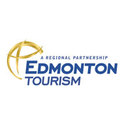Edmonton celebrates its rich Aboriginal Heritage
A rich tapestry of aboriginal experiences awaits visitors who heed the ancient call to head west.

Edmonton, Alberta | With more than 40 First Nations calling Alberta their home and Edmonton holding the status of being the Canadian city with the second largest number of aboriginal residents, it’s no surprise to find a thriving selection of aboriginal tourism choices – a good portion within easy reach of the city’s metropolitan region.
From camping in a teepee to one of the largest explorations of First Peoples' history on the continent, travellers will find that Edmonton is an aboriginal gateway for an enriching tourism excursion. Prefer a different type of look at aboriginal culture? Then how about putting the Dreamspeakers International Aboriginal Film & Television Festival on your agenda?
Historical buffs will find wonders also lie ahead at the Royal Alberta Museum’s Syncrude Gallery of Aboriginal Culture, just minutes from downtown Edmonton. Spanning an era of more than 11,000 years and 500 generations, it’s unlike most others exhibition in Canada: there are more than 3,000 artifacts to see while recordings and interactive computer technology transport visitors from the last Ice Age to current times. And while the heart of this gallery is an immense teepee, the museum is not the only place to experience one.
Just thirty minutes away in historic AMISKWACI (Cree for Beaver Hills) you can stay in wood-floored teepees at this private campground and experience a Sharing Circle, play a native drum, create handicrafts, or learn about native history, culture and spirituality.
But with so much at your fingertips, here are some suggestions to the wide variety of memorable encounters that are certain to transform your vacation experience.
When in Edmonton check out the Crosses on 105th Street, a historic walking tour that retraces the original steps of the First People of Alberta. It’s also the place to be if you’d like to find evidence of burial sites and trading posts. Budget about 2.5 hours for the tour, which requires a minimum of four adults.
The annual Dreamspeakers International Aboriginal & Television Festival, meanwhile, provides an opportunity to learn about aboriginal cultures from around the world and is a rich resource for aboriginal filmmakers, for directors, scriptwriters, technicians, actors, musicians, storytellers, artists and craftspeople.
And Fort Edmonton Park provides another excellent opportunity to travel back in time. Live history as it was once lived and experience life as if you were in the Hudson's Bay Company fur-trading fort in 1846. See what it was like to be on the streets in 1885, 1905 or 1920 as you get up close with the past. Further, The Native Camp, right outside the Fort, depicts the long association between the Cree and Hudson Bay Company traders where natives supplied traders with food and furs while traders offered manufactured goods.
Outside of Edmonton – no matter which trail you choose – the choices are just as plentiful. Head north to nearby St. Albert, for example, where aboriginal museums and culture are prominent.
At the Musée Heritage Museum, which explores the story of St. Albert, a Métis settlement quickly grew up around Alberta’s oldest non-fortified community. Within the museum’s exhibits, the stories of many Métis families are told and a Métis genealogy database can be checked to trace Métis ancestry.
More on the role the Métis played in St. Albert can be found at the Father Lacombe Chapel – restored to look as it did when it was originally built in the 1860s. Find out how Father Albert Lacombe and his Métis helpers constructed a log chapel – Alberta’s oldest building – to serve the new St. Albert Roman Catholic Mission, which became the centre of the thriving French-speaking Métis settlement of St. Albert.
Or visit the Michif Cultural Centre – also in St. Albert – to view a collection of Métis items and see a pictorial history while you’re there. The centre, which includes a library, wants to preserve and protect the culture and heritage of the Métis in Alberta.
Trek east and you’ll find the Elk Island Retreat where teepee and other camping facilities are offered in a unique outdoor setting – minutes away from Elk Island National Park, an area that is home to free-roaming bison, moose, deer, and elk, as well as more than 250 species of birds. At the retreat, however, prepare for an authentic cultural encounter through its Aboriginal Cultural Awareness Program, which is provided via a partnership with aboriginal resource persons.
As you can see, an aboriginal outing in Edmonton is no gamble. That is unless you change direction and set off to the River Cree complex on the city’s western edge. There you’ll see how aboriginal tourism takes on a different dimension with a four-star hotel, casino, dining and entertainment complex awaiting at the Enoch Cree Nation reserve.
Aboriginal Ancestry
For a more complete picture of the Alberta aboriginal experience, here are some facts and figures:
- There are 44 First Nations in Alberta, according to the First Nation Information Project.
- The languages of the Cree, Blood, Ojibway and Blackfoot First Nations of Alberta are derived from the Algonquian linguistic family, while the language of the Dakota is derived from the Siouan linguistic family. The languages of the Slave, Chippewayan, Beaver and Sarcee are derived from the Athapaskan linguistic family.
- Of the 188,365 aboriginals enumerated in Alberta, 97,275 (or 51.6 per cent) were First Nations people, 85,500 (or 45.4 per cent) Métis, and 1,605 (or 0.9 per cent) Inuit.
- The aboriginal population in Canada has increased by 45 per cent in the past decade and now exceeds the one-million mark.
